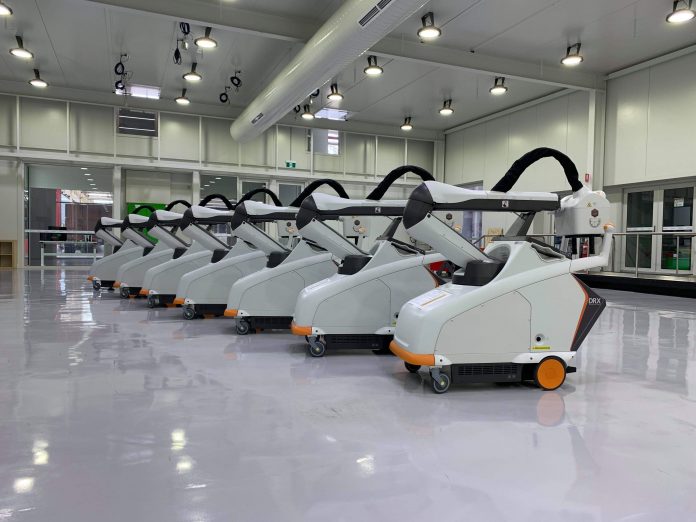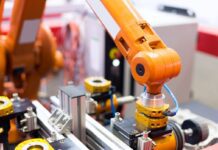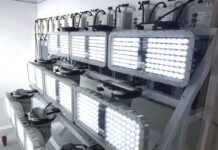
Media Release
Coronavirus continues to drive sales into Asia and Europe for South Australian hi-tech x-ray manufacturer Micro-X.
The Adelaide-based company reported to the Australian Securities Exchange this morning that sales of its flagship lightweight mobile x-ray machine had reached $1.8 million for the quarter with $1 million worth of sales in the past 20 days.
With almost four weeks of the March quarter remaining, the result has already dwarfed December quarter DRX Revolution Nano sales of $384,000 and is almost on par with the $1.9 million in sales achieved in the entire 2019 financial year.
There is a requirement for urgent delivery of the latest batch of orders within a four-week time frame. These additional purchase orders are for delivery to Asia and Europe.
The company said while the orders through its distributor Carestream Health did not specify the end customer, it was understood that due to the size and urgency of the orders, some of these Nano units were to be deployed in connection with the ongoing COVID-19 coronavirus outbreak.
While the standard lead time for the delivery of a Nano is between 8-12 weeks from order date, Micro-X says it has been able to deliver its recent February orders within a time frame of approximately four weeks from order date.
Early-stage diagnosis of coronavirus is by a blood test to confirm the infectious agent, and a chest x-ray is used as an essential part of diagnosis of the development and progression of the severity of the illness. Like with pneumonia, a chest x-ray is used to detect fluid in the lungs, particularly with patients presenting with severe acute respiratory distress.
Micro-X managing director Peter Rowland said the mobile x-ray imaging units offered a flexibility of use most suited to the requirements of infection control procedures and also the nature of temporary hospital quarantine buildings.
“With the alarming state of this growing epidemic, we are pleased that our Nano mobile X-ray units are being used to assist in diagnosis and management of this new respiratory virus,” he said.
“For most patients, COVID-19 begins and ends in their lungs because, like the flu, coronaviruses are respiratory diseases and chest X-rays remain a key tool in monitoring the progression of the pneumonia-like symptoms of severe coronavirus infection.
“The number of countries now ordering the Nano also illustrates a growing awareness of the product and its capabilities which has longer term benefits for increasing adoption.”
The spike in demand for the mobile x-ray machines come at a critical time for Micro-X following disappointing sales figures in the December quarter
Additional x-ray imaging capabilities are being deployed in many countries to meet these needs for the growing numbers of confirmed Coronavirus cases.
Micro-X shares were as high as 36 cents in September but steadily fell on the back of soft results to be only worth 13 cents in early February. Following the company’s initial coronavirus sales announcement on February 13, the share price hit 20 cents on February 17 and was 19 cents at noon today.
Micro-X relocated from Victoria to South Australia in 2015 to establish a manufacturing hub at the Tonsley Innovation Precinct, a former Mitsubishi car assembly site in Adelaide’s southern suburbs.
It also listed on the ASX in December 2015 and launched the DRX Revolution Nano in 2017. The units are manufactured using carbon nanotubes, making the Nano several times lighter and more compact than traditional x-ray machines.
Micro-X is also developing a Rover mobile x-ray unit for military hospitals, a mobile backscatter imager for the remote detection of improvised explosive devices and a mobile baggage scanner for airports.
A version of this story first appeared in The Leads South Australia. Source: http://theleadsouthaustralia.com.au/industries/manufacturing/coronavirus-drives-sales-of-hi-tech-mobile-x-ray-units/
Image Credit: micro-x.com




















